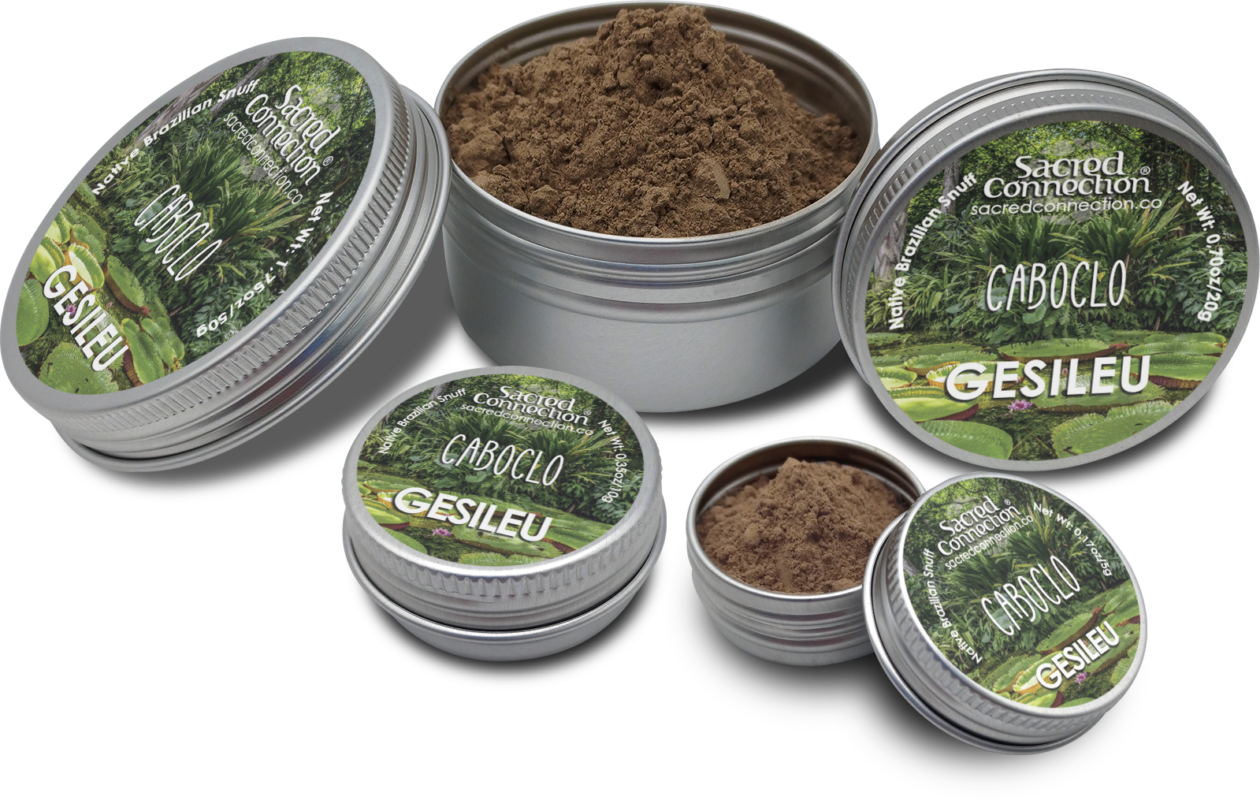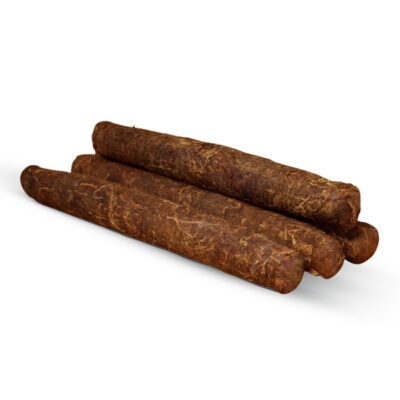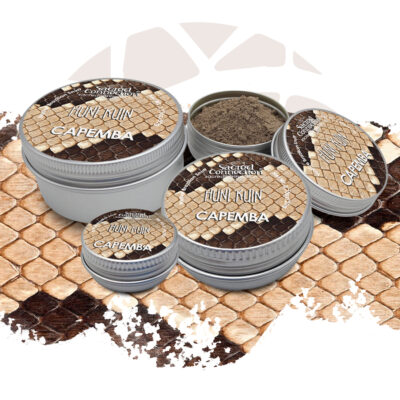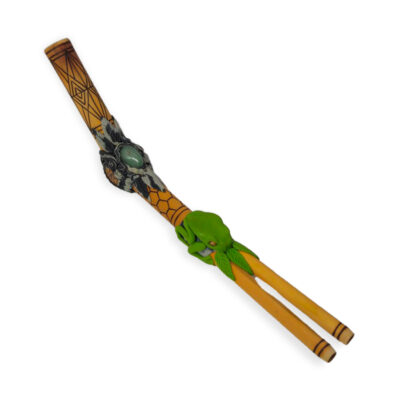The demystification of Sacred Medicine: an interview with Master Rapé Maker Gesileu Phasphy Ninawa
To this day, misconceptions and prejudiced opinions regarding natural medicine, especially the kind practiced by Native Folk, are still deeply rooted in our society. While some consider it to be lesser and inaccurate, claiming that there’s no science behind the beliefs and practices of these peoples and their healing, medicinal procedures and rituals, others simply banalize what is sacred and worthy of respect, turning secular knowledge and devotional effort into a mere excuse and pathway to delve into an entirely different world of mindless consumption of illicit substances.

Uniting efforts in hopes of overturning these cycles of misinformation and preconceptions, Amanda Viana dedicated time into visiting Acre, a state in Northern Brazil, and learning more about the heritage and traditions of some of the native communities that not only make use of sacred medicine in ceremonies and as part of their daily lives, but also create and produce their own recipes.
A: Gesileu, what is your relationship with rapé? Are you a ‘master’, a pajé of this medicine?
G: The term ‘master’ or ‘shaman’ is a very strong designation. In fact, I don’t consider myself a ‘master’ of rapé because I still have a lot to learn from this medicine. I am a student of rapé, a scholar of this medicine that is so important and sacred to the indigenous peoples of the Acre Amazonian Rainforest. During our study, we learn that the terms ‘master’ or ‘shaman’ are titles that we do not give to ourselves. If you hear someone saying, “I am a master, I am a shaman”, it is a first warning to be suspicious. We don’t call ourselves in that way. Now, if it is another person, if it is you, who calls me ‘master’ or ‘shaman’ of rapé, with all humbleness, I will accept it, because it is you, someone else, who is defining me in such a way. But if you ask me whether I am a ‘master’ or ‘shaman’ of rapé, I’ll tell you, “No, I am not”.
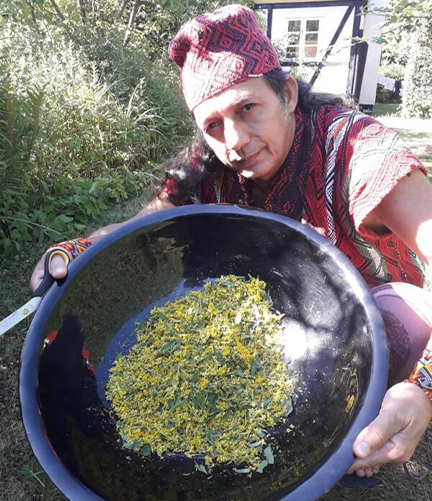
A: Tell us a little about your ancestry and your relationship with indigenous peoples.
G: I am a caboclo, that is, my ancestry consists of a mixture of white and indigenous people. My ancestry line is composed on my mother’s side of original people of the Amazon with some mixture of white people, and on my father’s side of indigenous people stemming from the northeast of Brazil. My mother has indigenous Amazonian ancestors, but due to the mixing with white people that took place after the European invasion, I couldn’t precisely tell you which ethnic group she comes from. My father is a descendant of the northeastern Xukurus people, whose village is located near the municipality of Pesqueira, in Pernambuco. My paternal great-grandparents belonged to that ethnic group.
I was born in Acre, in the middle of the Amazon rainforest. Because my parents were rubber tappers, from a very early age I had a direct and intense connection with the forest. I lived literally immersed in the forest, not knowing what a city, a municipality or even a village was. It was only when I was seven years old that my father took me to the city for the first time, and that was a very particular experience for me. The first town I visited was the town of Xapuri, which, despite being very small, impressed me a lot and made a lasting impression on me.
A: What was the first indigenous village you ever visited, and which are the villages you are still in touch with?
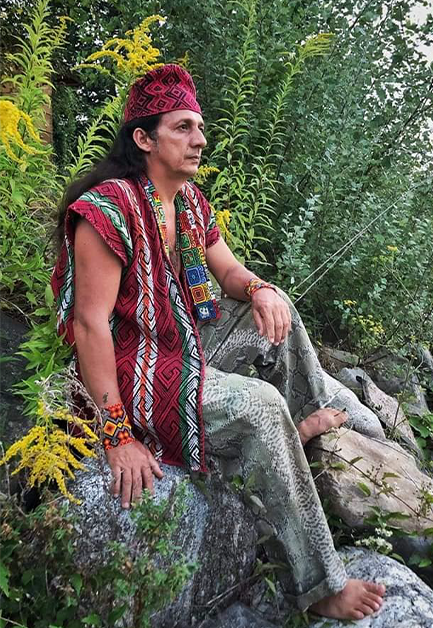
G: Since very early in my life, I have had close contacts with the indigenous communities here in Acre. Precisely because of that, I can say that I know almost all the ethnic groups in this state, of which about fourteen different indigenous peoples are officially recognized. I must say that I have a closer and very special relationship with the indigenous ethnic groups of the Panu linguistic branch, more specifically with the Huni Kuin (‘the genuine people’), the Shanenawa (‘the blue-bird people’) and the Yawanawa (‘the people of the wild boar’). It was with the Huni Kuin that I went through my rapé initiation.
My first acquaintance with the medicine of kampum (also called kambô)3 took place with the Shanenawa people, whose village is close to the town of Feijó, that is, on the other side of the town. After some time, I had a long relationship with the Yawanawa people. With these people, I had also the opportunity of furthering my studies on the medicine ayahuasca, which they call uni, and on the songs of the forest, which enables to communicate with the living beings there.
Originally published at: https://www.fondationalaindanielou.org/intellectual-dialogue/transcultural-dialogues/transcultural-dialogues-n10-may-2022-spring-equinox-3/
Perfect for meditation, Caboclo Gesileu rapé allows you to feel the energy of nature, sharpening the senses and calming the mind. Additionally, as you already know, rapé is an excellent remedy for those with respiratory problems, providing a calm, tranquil, and restorative sleep.
